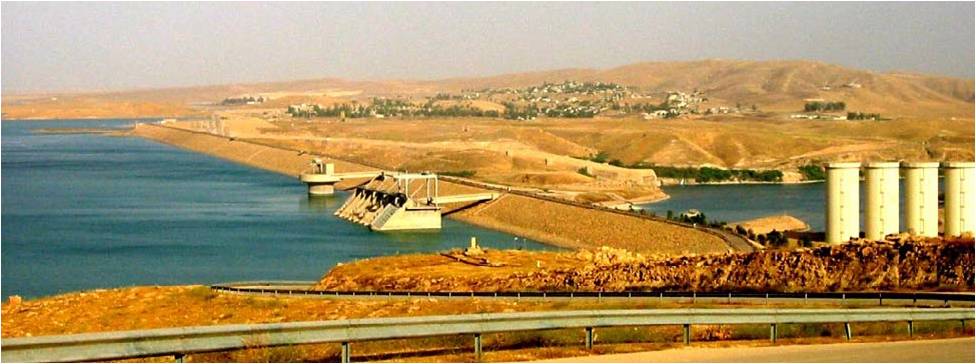On a brisk March morning in Washington last year, US officials announced that they were bringing criminal charges against seven Iranian nationals who tried to hack into computer systems of the New York Stock Exchange and AT&T. Usually, attempts at electronic burglary aren’t noteworthy: Cyberattacks on financial institutions are about as widespread as the Social Security numbers of Equifax clients.
But these hackers—gainfully employed by Iran’s Revolutionary Guard—also pulled off something startling: They briefly seized control of a small dam in Westchester County, just a few miles north of New York City. Fortunately, they didn’t cause any flooding, because it so happened that the dam’s gate had been manually disconnected from the system’s circuitry.
This incident recalls the rich history of using dams as tools of warfare. During the Eighty Years’ War in the 16th and 17th centuries, Dutch rebels flooded two-thirds of Northern Flanders in an ultimately unsuccessful bid to recapture territory from Spanish occupation. In 1938, China destroyed dams along the Yellow River in an attempt to prevent Japan from seizing the city of Wuhan, killing about 800,000 people in the process. More recently, in 1993, Saddam Hussein diverted the Tigris and Euphrates Rivers away from the Mesopotamian Marshes to deprive Shia militants of sanctuary.
And although such flooding hasn’t happened in the past quarter-century, it’s not for lack of effort. In 2012, the Department of Homeland Security (DHS) published a report on worldwide dam attacks since 2002, warning that dams across the world exhibit “a number of critical assets whose failure or disruption could lead to deleterious results, including casualties, massive property damage, and other severe long-term consequences.”
Of the 25 incidents recorded in the DHS study, about half were in the Middle East, and threats continue to mount today. Just a few months ago, Kurdish-Syrian forces repelled a campaign by ISIL to seize the Taqba Dam, the largest in Syria. Coalition forces battled for weeks for control of the dam, which is viewed as crucial to eventually liberating the ISIL stronghold of Raqqa. Equally importantly, conceding dams to ISIL can be devastating for locals. In April 2014, ISIL captured the Nuaimiyah Dam and, The Guardian reported, “deliberately diverted its water to drown government forces.” Twelve thousand people lost their homes and millions more were without water. “Using water as its weapon, ISIL intended to impose a drought on the cities of Karbala and Najaf, holy sites of the Shia,” explained a journalist at Qantara.
These threats, at their most extreme, have the potential to cause unfathomable human destruction. Before US-backed Iraqi forces recaptured Mosul in June of this year, engineers warned that the city’s largest dam was on the verge of collapse, its maintenance crew having fled after ISIL captured the city in 2014. The collapse of the dam would have killed hundreds of thousands of people and leveled Iraq’s third largest city.
Though inundation is a fearsome threat, the far more common strategy is deprivation. As warfare continues to diminish supplies of available drinking water, civilians in conflict zones frequently find themselves the victims of tactical drought. In 2015, the Red Cross warned that both government and opposition forces in Syria were disrupting access to water in the besieged city of Aleppo. In March, the UN accused the Assad government of bombing the Ain al-Fijeh spring in Dcember 2016, leaving 5.5 million people without water.
In addition to their humanitarian consequences, these types of diversions can lead to lasting political instability. From 2007 to 2009, water diversion contributed to a significant drought in the region, and a report from Yale’s School of Forestry and Environmental Studies suggests that “the resulting failed crops helped trigger Syria’s civil war by creating social breakdown as farmers became refugees and food prices soared in cities.”
Though weaponizing water offers enticing power to tyrants and terrorists, dams do have one unexpected protector: the self-interest of those who control them. According to Ambika Vishwanath, a security consultant specializing in Middle East energy, during the three years ISIL held the Mosul Dam, it was effectively in control of 75 percent of Iraq’s electricity production and was strongly in favor of protecting it. ISIL even once warned citizens in Raqqa to evacuate out of fear the Taqba Dam could collapse. Even terrorist organizations recognize that inundating entire cities and wasting millions of gallons of water delegitimizes those seeking power in the eyes of the publics they claim to represent. And while it hasn’t stopped actors from diverting water to the detriment of civilians, perhaps the benefits of water warfare are murky enough to avoid catastrophe.
